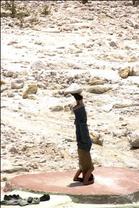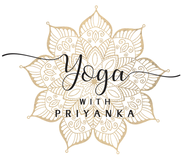 Patanjali’s Yoga Sutras comprise 196 aphorisms(sutras). In medieval times, Yoga was cast as one of the six orthodox āstika schools of Hindu philosophy. Although the Yoga Sutras have become the most important text of Yoga, the opinion of many scholars is that Patañjali was not the creator of Yoga, which existed well before him, but merely a great expounder. In the Yoga Sutras, Patañjali prescribes adherence to eight "limbs" or steps (the sum of which constitute "Ashtanga Yoga", the title of the second chapter) to quiet one's mind and achieve kaivalya. The Yoga Sutras form the theoretical and philosophical basis of Rāja Yoga, and are considered to be the most organized and complete definition of that discipline. The Sutras not only provide yoga with a thorough and consistent philosophical basis, they also clarify many important esoteric concepts which are common to all traditions of Indian thought, such as karma. Patañjali divided his Yoga Sutras into four chapters or books (Sanskrit pada)
The Hatha Yoga Pradipika written in the 14th Century; the Shiva Samhita, written in the late 15th or 17th century and Gheranda Samhita (late 17th century) are considered the primary texts of yoga. The Hatha Yoga Pradipika begins with a chapter called Asana. It explains; “Being the first accessory of Hatha Yoga, asana is described first. It should be practiced for gaining steady posture, health, and lightness of body.” It then names 15 asanas. The first 11 are svastikasana (auspicious), gomukhasana (cow face, legs), virasana (hero), kurmasana (tortoise), kukkutasana (cock), uttana karmasana (intense tortoise), dhanurasana (bow), matsyasana (fish), paschimottanasana (seated forward bend), mayurasana (peacock), and savasana (corpse). Interestingly, none of these are standing poses. After listing these eleven asanas, the text says; “Shiva taught 84 asanas. Of these the first four being essential ones.” It then describes four seated asanas: siddhasana (perfect), padmasana (lotus), simhasana (lion), bhadrasana (fortunate). The confusion about names of asanas has always existed, right from the beginning. After describing siddhasana, which the siddhas unsurprisingly viewed as the most important and only really necessary posture, the text goes on to say; “Some call this siddhasana, some vajrasana. Others call it muktasana or guptasana.” One pose going by several names appears to be traditional. The Shiva Samhita has less to say, but it’s an important text and is not to be left out. In the third chapter, titled Practice, verses 90 and 91 show that the disdain of the body was slow to be overcome. “This temple of suffering and enjoyment, made up of flesh, bones, nerves, marrow, blood and intersected with blood vessels etc., is only for the sake of suffering of sorrow.” “This body, the abode of Brahma, and composed of fine elements and known as Brahmanda (the egg of Brahma or microcosm) has been made for the enjoyment of pleasure or suffering of pain.” The Shiva Samhita lists four asanas: siddhasana, padmasana, ugrasana, and svastikasana. Each of these was in the Hatha Yoga Pradipika except uarasana, which translates to formidable asana. There is one more asana in the Shiva Samhita. In the fourth chapter, Mudras, describes mahamudra. Janu sirsasana, or head to knee pose. The Gheranda Samhita is the most encyclopedic of the three classic texts. This is what it has to say about Asanas; “There are 8,400,000′s of Asanas described by Shiva. The asanas are as many in number as there are numbers of species of living creatures in this universe. Among them 84 are the best; and among these 84, 32 have been found useful for mankind in this world.” A secret oral tradition passed from guru to student, for centuries and then in the late 18th century, everything changed. (compiled from several sources).
0 Comments
Your comment will be posted after it is approved.
Leave a Reply. |
-
Yoga
- About
-
Priyanka's Journey
>
- Recommended Spiritual Documentaries & Books
- Publishings >
-
Interviews
>
- Life changing chats-dec2020
- Mutliple Sclerosis and Yoga Interview
- ThePrint Interview
- 94.3 radio one
- vanilla luxury
- Ishq 104.8 fm Interview - 3rd International Yoga Day ~ Interview
- Acro Yoga interview
- Culture Shock - India
- poses to tone your waist
- Restorative Yoga - NDTV Interview
- MEMSAHIB of India
- little black book delhi
- Yogacurious.com Interview
- Sivana
- Testimonials
- Yoga Workshops & Classes >
- Session Pricing
- On-Going Events
- Book Online
- 200hr YTTC
- Guided Meditations
- Shop
- Contact
- Blog
- Gallery
- Meet Priyanka
- Yoga Retreat in Grenada
- FUNDRAISER
- Time Lapse Yoga
 RSS Feed
RSS Feed
